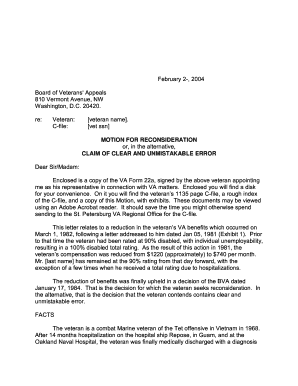

#CA SAMPLE MOTION FOR RECONSIDERATION TRIAL#
Still, most lawyers also will cite CR 59(a)(9) to argue that a significant error has occurred that the trial court should want to correct. For example, if there's a mathematical error in the judgment, cite CR 59(a)(6), 1 not the catch-all, CR 59(a)(9). (9) That substantial justice has not been done.Ĭite the specific grounds that best apply to your situation. (8) Error in law occurring at the trial and objected to at the time by the party making the application and (7) That there is no evidence or reasonable inference from the evidence to justify the verdict or the decision, or that it is contrary to law (6) Error in the assessment of the amount of recovery whether too large or too small, when the action is upon a contract, or for the injury or detention of property (5) Damages so excessive or inadequate as unmistakably to indicate that the verdict must have been the result of passion or prejudice (4) Newly discovered evidence, material for the party making the application, which he could not with reasonable diligence have discovered and produced at the trial (3) Accident or surprise which ordinary prudence could not have guarded against (2) Misconduct of the prevailing party or jury (1) Irregularity in the proceedings of the court, jury or adverse party, or any order of the court or abuse of discretion, by which such party was prevented from having a fair trial: To make your motion stand out, you must have solid and readily apparent support for one of the CR 59(a) causes.īe sure to cite the specific "causes" on which you are relying.

Trial courts generally do not want their dockets filled with motions for reconsideration. Reorient the brief, trying to address just what the judge needs to know to agree with you that the prior decision needs to be changed. In fact, do not even cut and paste from that prior brief to the extent you can avoid it. To make sure your brief is fresh and addresses reasons to reconsider rather than just rehashing old ground, do not copy your prior brief and try to modify it. Make your points, back them up and conclude. You need to convince your judge that he or she got it wrong. In this posture, appeal to the judge's desire to issue correct decisions.
#CA SAMPLE MOTION FOR RECONSIDERATION PROFESSIONAL#
More than other briefs, this brief needs to be on point and well organized, and portray a professional tone. Give your judge exactly what he or she needs at his or her fingertips to consider what you are saying. It is important to articulate precisely and economically the grounds for reconsideration. This requires that you analyze the possible mistakes, evaluate the law, educate your client and arrive quickly at a decision to begin the briefing and gather any necessary declarations.īriefing Style. You also need to decide upon your strategy quickly after the ruling. For example, if you need a transcript to support your motion, you must make the necessary arrangements in short order.

This short timeline requires quick action.

The motion must be brought within 10 days of the judgment, order or decision. The cause must "materially" affect "the substantial rights of such parties." Each rule provides the litigator with an opportunity to overcome a setback.ĬR 59(a) applies not only to new trials, but to reconsideration of "any other decision or order." The rule lists nine specific "causes," one of which must be found to justify reconsideration. Additionally, while CR 59(a) provides specific reasons that must be found to justify reconsideration, CR 54 is more open-ended. This article will address motions for reconsideration of orders or decisions under CR 59(a) and motions for reconsideration of partial summary judgments under CR 54. A thoughtfully presented motion for reconsideration could be just the ticket. Trial courts are interested in avoiding or correcting mistakes. Judicial economy favors correction of mistakes as early as possible, before costly and time-consuming appeals begin. Where a mistake has truly occurred or you feel the court missed a critical point, seize the opportunity to get your case back on track. This is not a second bite at the same motion practice, but an opportunity to advance the correct adjudication of a matter. True, you should avoid motions for reconsideration that do not raise overlooked grounds and do not pointedly and specifically indicate how the court has erred. Practitioners need not feel overly pessimistic about the odds for success if they have reasonable grounds for the motion. Motions for reconsideration are essential litigation tools.


 0 kommentar(er)
0 kommentar(er)
